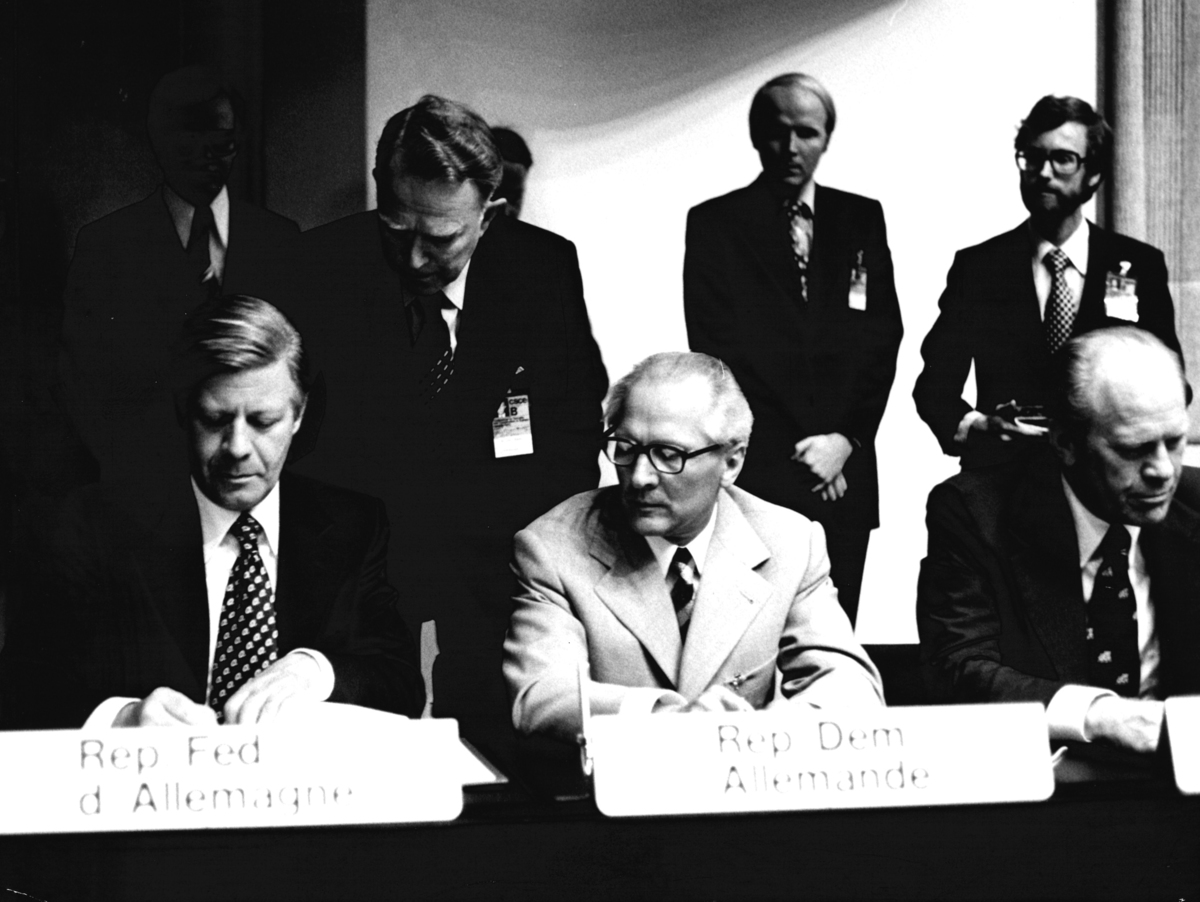Source

Source: From left to right: Helmut Schmidt, Erich Honecker, and Gerald Ford sign the Final Act of the CSCE, August 1, 1975. Location: Helsinki. Photo: Presse- und Informationsamt der Bundesregierung. Bundesbildstelle.
Representatives from all the European states (minus Albania) and from the U.S. and Canada participated in the Conference for Security and Cooperation in Europe (CSCE). First, a conference of foreign ministers was held in Helsinki (July 3–7, 1973). Then, experts in Geneva spent almost two years—from September 18, 1973, to July 21, 1975—formulating the Final Act (Helsinki Accords) of the CSCE. Afterwards, leaders from all 35 participating countries met in Helsinki—from July 30, 1975, to August 1, 1975—to sign the Final Act. For the Soviet Union, it was important that the Final Act emphasized the inviolability of borders, territorial integrity, and non-intervention in domestic affairs. For the Western states, on the other hand, it was important that the Final Act provided for the protection of human rights and basic freedoms, and allowed them to issue, under the point, “Cooperation in humanitarian and other areas,” a declaration affirming their commitment to the facilitation of human contact and to the “improvement of the circulation of, access to, and exchange of information.” In the photograph below (from left to right), Helmut Schmidt, Erich Honecker, and Gerald Ford sign the Final Act of the CSCE.

Source: From left to right: Helmut Schmidt, Erich Honecker, and Gerald Ford sign the Final Act of the CSCE, August 1, 1975. Location: Helsinki. Photo: Presse- und Informationsamt der Bundesregierung. Bundesbildstelle.
Courtesy of the German Information Center